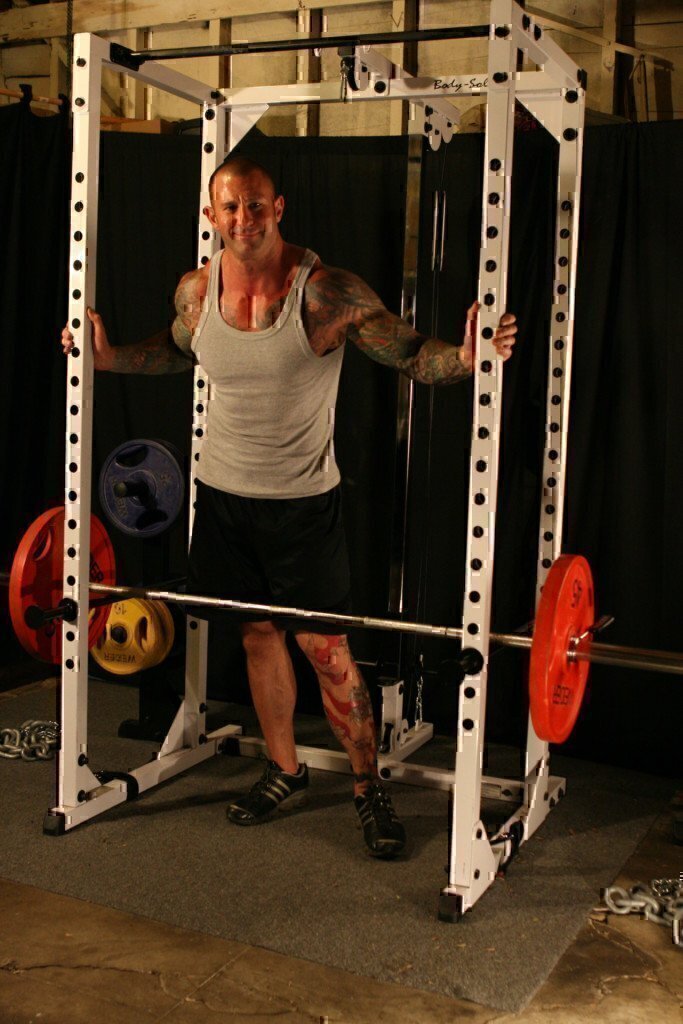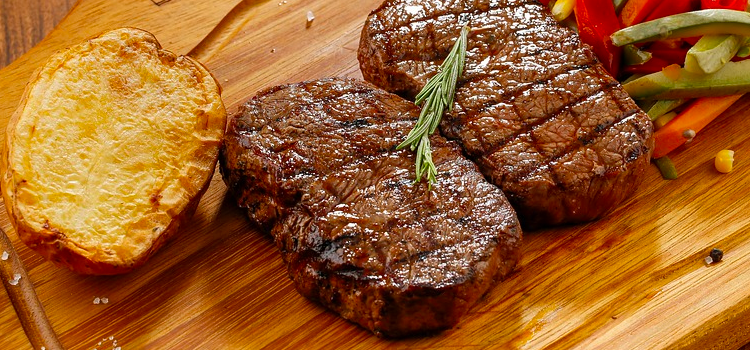SPONSORED
If there’s one area of nutrition that people seem to be the most confused about, it’s macronutrients (“macros” for short) – protein, carbohydrates, and fat, and in what proportion to take them. Everywhere you look, there’s a different ratio touted: 40/30/30, 60/30/10, 55/25/20, and on and on.
Truth is, there’s no one macronutrient ratio that works for everyone, since all of our bodies are different. But in the last 20+ years, I’ve found a great macro formula that promotes muscle-building and getting stronger while maximizing fat loss. I call it my “Dieting 101” protocol.
Dieting 101 has helped thousands upon thousands of people achieve their fitness goals by way of a couple key premises: (1) It’s relatively simple, and (2) it’s customizable based on your current bodyweight and ongoing progress on the diet.
In this article, I give you a rundown of the basic tenets of Dieting 101. For a more in-depth read on all the “steps” of the diet, read my full-length Dieting 101 article on JimStoppani.com.
The Right Approach to Fat Loss
There are a lot of different diet approaches you can take; personally, I’m a huge fan of intermittent fasting, specifically a 16-hour fast and 8-hour feeding window every day. But before you adopt that type of diet, it’s important to have a good handle on the nutritional basics. To me, that means striking a proper macronutrient ratio that’s optimal for dropping body fat, maintaining muscle mass, and providing you ample energy throughout the day for challenging workouts as well as being alert and focused at your job as well as at home with your family.
Yes, I believe in calories in versus calories out for losing body fat – to an extent. But more than that, I believe that if you’re taking in the right amounts of all three macronutrients (protein, carbs, fat) for your goals and body weight, the calories will take care of themselves.
Calories and Carbs
Simply put, my formula for the most effective fat loss diet includes high protein, moderate fat, and as high a carbohydrate intake as possible while still dropping fat. This last point is key. When you want to get lean, manipulating carbs is more or less how’ll you do it. And eventually you’ll probably need to drop carbs. But it’s not so simple as just starting out on a low-carb diet and hoping for results.
In my opinion, the worst thing you can do diet-wise when trying to drop body fat is drop carbs too much too soon. This is why I usually don’t recommend ketogenic diets. Sure, you’d probably experience some fat loss results at first, but at some point your results would plateau.
If you’re already very low on carbs, how do you cut calories further? You certainly don’t want to drop protein. And you don’t want to drop healthy fats for your diet either.

Besides, you don’t want to go too low on calories anyway, and here’s why: When you diet, your body goes into starvation mode to and slows down your metabolic rate (the number of calories you burn during the day doing regular activities and just sitting around) as a means of conserving energy. The more you drop calories, the more your metabolic rate drops and the harder time you’ll have losing body fat.
To prevent a massive slowing of your metabolic rate, you need to gradually reduce your calorie intake little by little. You want to start a diet for fat loss by eating as many calories as you can while still losing weight. This way, you have ample room to keep lowering calories as your metabolic rate drops and fat loss hits a plateau.
Your Macronutrient Starting Point
To begin your healthy fat loss diet, you first need to analyze your current food intake and be honest about where you’re at diet-wise. I recommend keeping a food journal of everything you eat for at least a few days, up to a week. Apps like MyFitnessPal make it very easy to log all your foods and see exactly how many calories, carbs, proteins, and fats you’re taking in on an average day. This is your starting point.
In Dieting 101, I used an example of a 200-pound guy currently consuming 4,000 calories per day. Your bodyweight and calorie consumption could vary from this, but it’s a good baseline to use to get into some specific macro ratios.
For this hypothetical 200-pound guy, I recommend starting with a daily calorie and macronutrient consumption of: 200-300 grams of protein, 400 grams of carbs, and 100 grams of fat.
As for what exact foods to eat and how to space them throughout the day for your meals, you can refer to the sample meal plans in Dieting 101 as well as the Foods Database and Food Alternatives List on JimStoppani.com.
As for the macronutrient guidelines I just offered, I’ll break down my reasoning for these ratios now, starting with protein.
Protein Rules
I make no bones about it: I believe in taking in high protein every day, plain and simple. The upper end of my protein range above – 300 grams – represents 1.5 grams of protein consumed per pound of bodyweight per day (since the example individual is 200 pounds). Personally, this is the amount of protein I take in daily, but 1 gram per pound will suffice as well and represents the lower end of the range for a 200-pounder (200 grams).
This protein consumption may sound high, but it will help you build and maintain muscle mass, which is key for keeping your metabolic rate high (since muscle burns more calories than fat). Plus, the body typically doesn’t store calories from protein as body fat.
In fact, research has shown that taking in high protein helps promote fat loss, not just muscle building. In one study, subjects consuming 1.5 grams of protein per pound daily lost more body fat than those consuming 1 gram per pound, even though the 1.5-gram group consumed more calories during the day. (I sum up this study in more detail in my High Protein For Huge Benefits article on JimStoppani.com.)

Don’t Trim the Fat
A lot of people make the mistake of dropping fat from their diets when trying to lose weight. This is a mistake for many health-related reasons. First of all, your body needs healthy fats like omega-3 fatty acids for optimal heart health, muscle recovery, joint health, and a variety of other crucial bodily functions.
Monounsaturated fats are important, too. And it’s even beneficial to take in a moderate amount of saturated fat from foods like red meat, eggs, and dairy to maintain optimal testosterone levels.
My example of the 200-pound guy demonstrates a moderate yet significant 100 grams of healthy fat per day.
Carb Countdown
When looking to drop body fat, carbohydrates are the macronutrient you’ll want to manipulate. In a majority of my meal plans, I keep protein and fat intake constant from day to day. All that’s left to drop, then, is carbs.
And my rule for dropping them, as demonstrated in my Dieting 101 “steps” and sample meals, is simple: Reduce carbs by 0.25 gram per day any time fat loss stalls.
This rule of thumb focuses on two key premises: (1) When you drop carbs, you should do so incrementally – a mere quarter of a gram at a time; and (2) you should only drop carbs when your fat loss results plateau. Think about it. If you’re continuing to drop pounds on the scale while at least maintaining muscle mass, why would you need to (or want to) drop carbs further? Don’t drop carbs until you need to!
This 0.25-gram drop in carb should be ongoing over the course of months, or longer. In my fat loss diets, I recommend going as low as 0.5 or 0.25 gram per pound daily (100 grams or 50 grams, respectively, for the 200-pound person), but many people won’t need to go this low.
Keeping protein high, with a moderate yet significant amount of healthy fats, and dropping carbohydrates incrementally when you hit a plateau – that’s the basic gist of Dieting 101. And it’s a great place to start for anyone looking to lose body fat while still maintaining muscle size and strength.
It may not be easy for everyone, but it’s pretty simple.
MORE FITNESS CONTENT FROM DR. JIM STOPPANI










